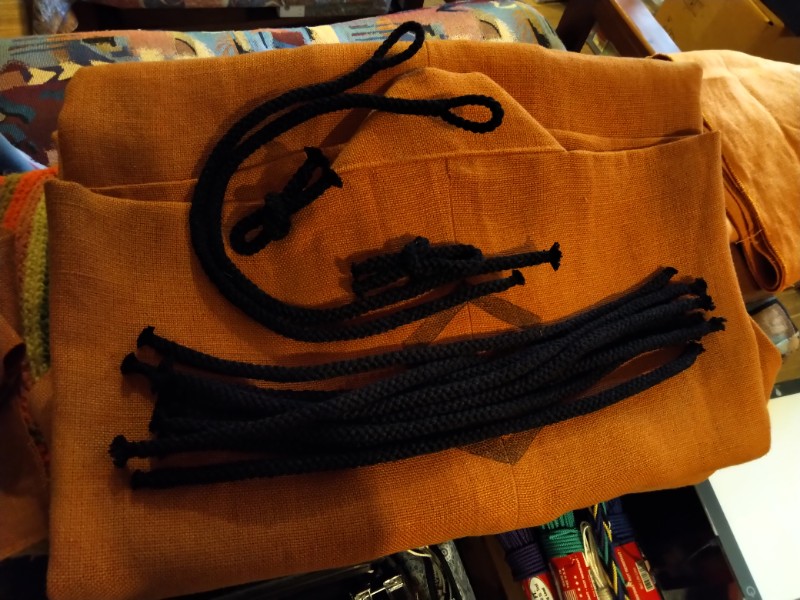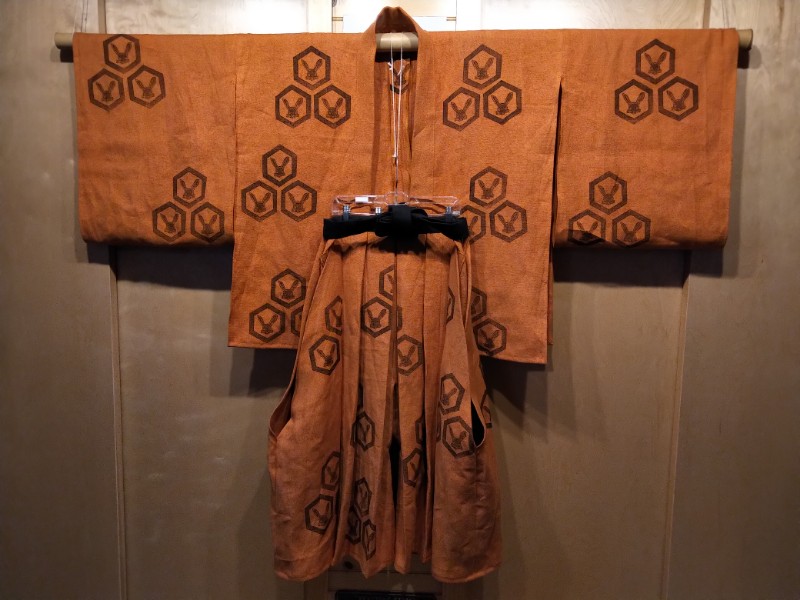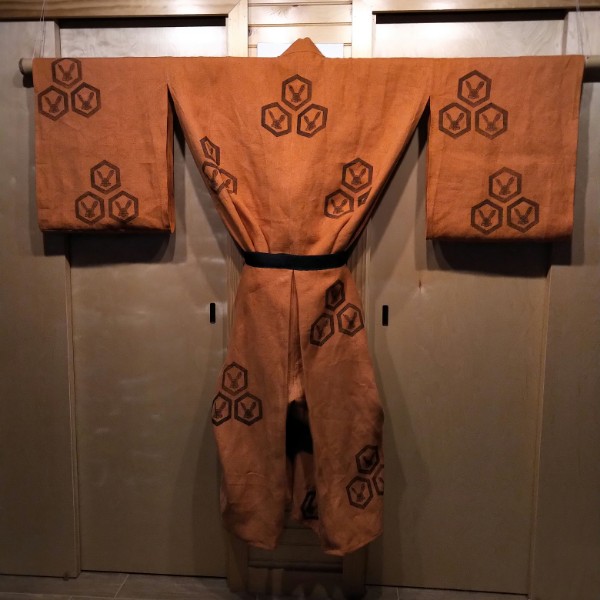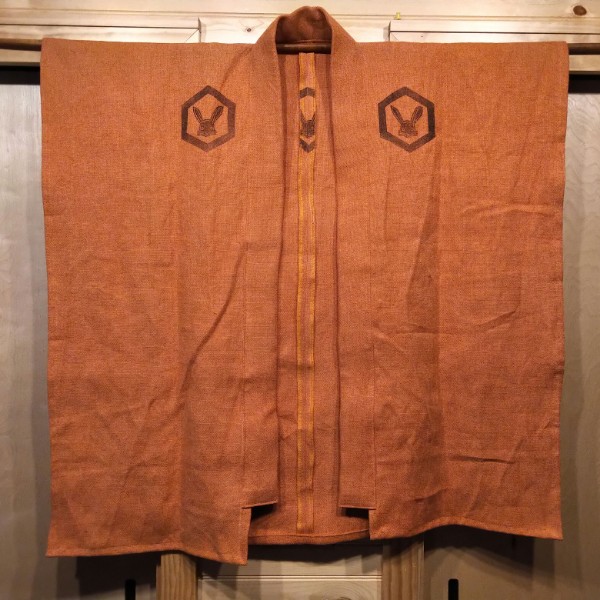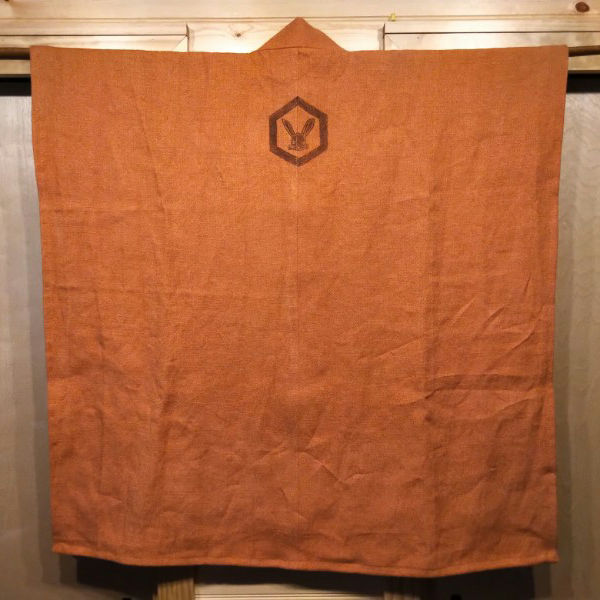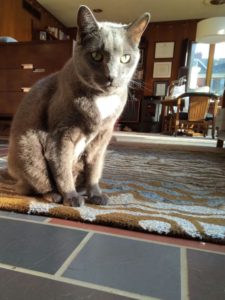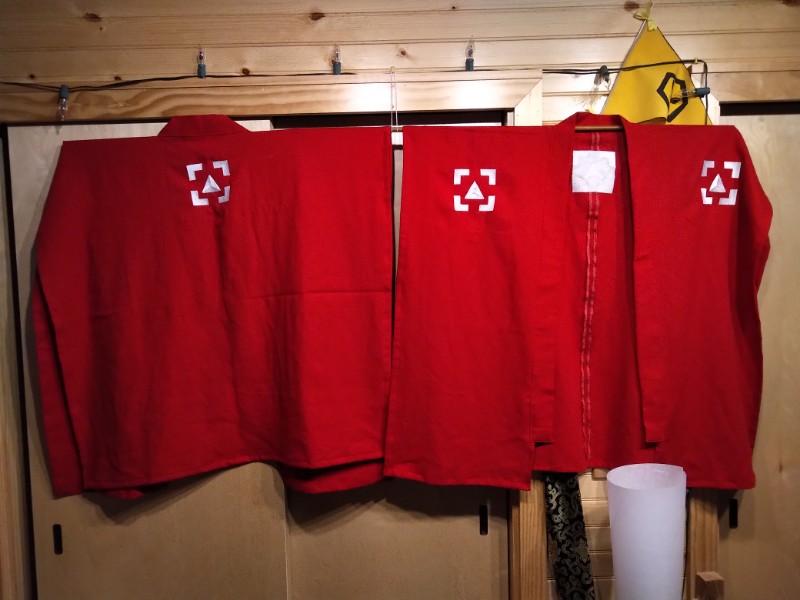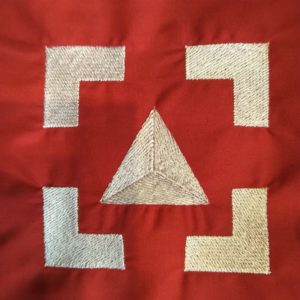The scroll doesn’t show them, but most hitatare I have seen are embellished with little knots called kotsuyu . I’ve made these in the past for my green hitatare and for Sir Morgen’s daimon hitatare. I want to get some pictures of me wearing the daimon before I add braids, so that it matches the scroll, but I do eventually want to add braids. To that end, I spent a few days making braids.
All of the braids are made from sixteen ends on black laceweight silk yarn per tama, and are simple 8-tama round edo yatsu braids. The pile at the bottom is 9 15-inch braids to make the kotsuyu knots, 5 for the hitatare and 4 for the hakama. The 2 braids with looped ends are for the munahimo chest ties at the front of the hitatare. The two very small knots are for the vestigal sodetsuyu sleeve knots at the bottom of the sleeve ends.

